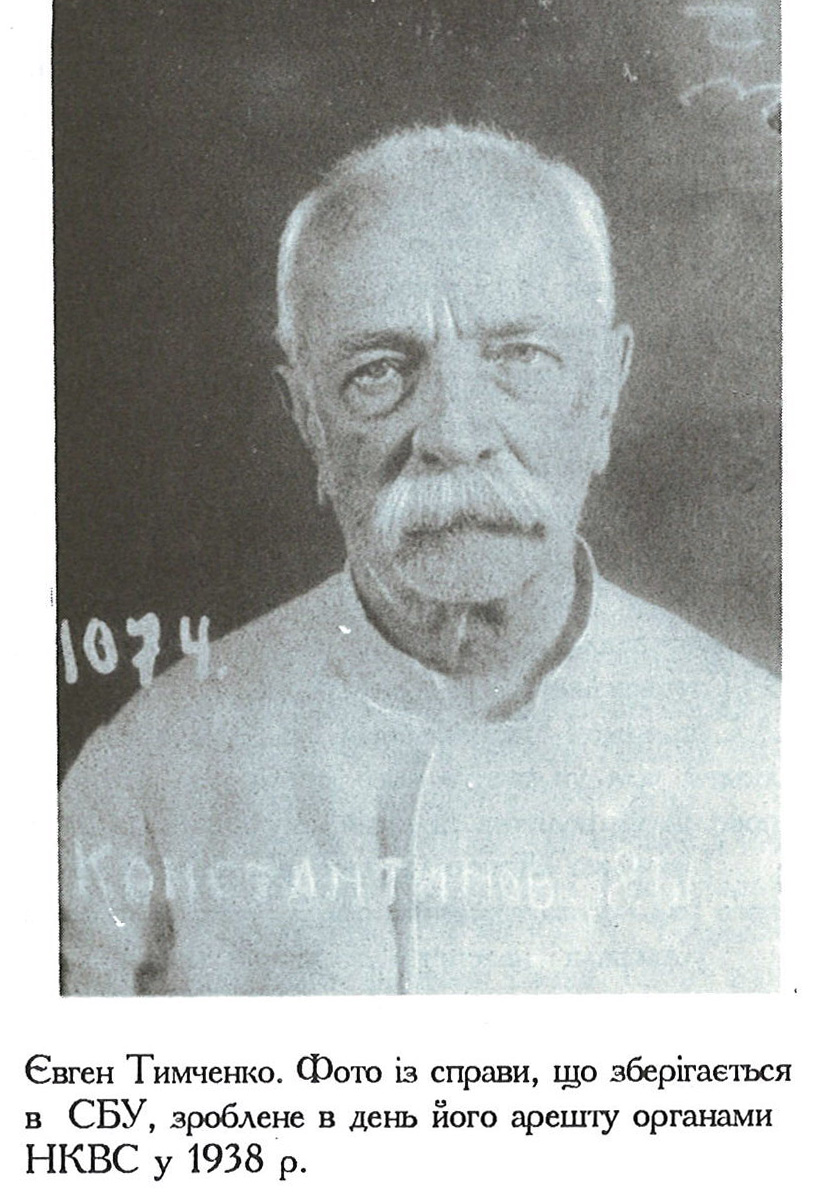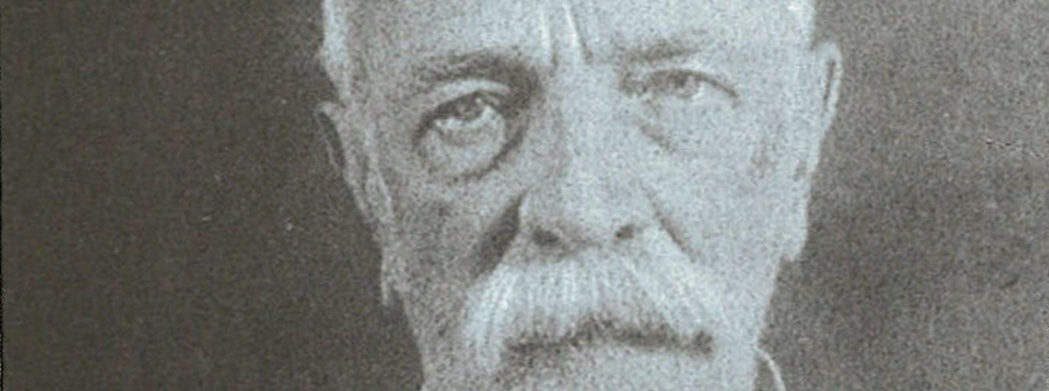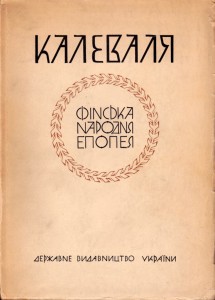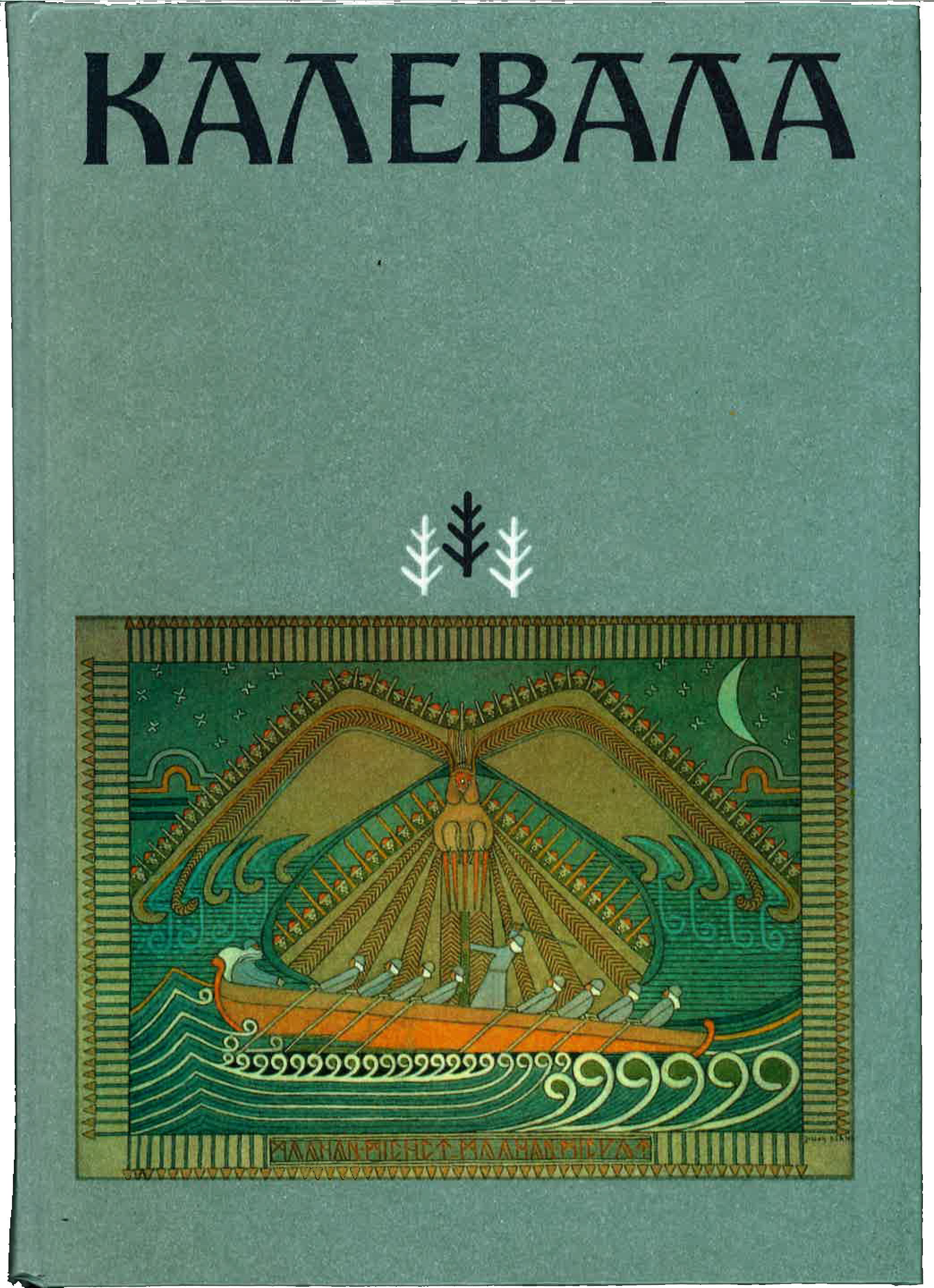E. Timčenko, Kalevala in Ukrainian
Evgen Kontantinovič Timčenko was born in Poltava on October 27, 1866. When he was ten years old, he moved with his family to St. Petersburg where he attended high school. In 1891, Timčenko started to work on a dictionary of the Ukrainian language in Kyiv. He studied linguistics at the universities both in Kyiv and St. Petersburg. He was, particularly, interested in the Ukrainian language and grammar, its dialects and vocabulary. Through his work with the dictionary, he also started to study Ukrainian literature from previous centuries. After the first world war he was appointed professor of Ukrainian language and comparative linguistics and the State University of Kyiv.

Mug shot of E. K. Timčenko, 1938. Photo source: the Kalevala in Ukrainian language, p. 15.
Through his work, E. Timčenko was convinced that the Ukrainians were a separate linguistic and ethnic nationality. His opinion was contradictory to the Soviet Union and its assimilation politics. Consequently, Timčenko was arrested in 1938. He did not give up on his beliefs during the interrogations and in 1939–1944 Timčenko was held in the region of Krasnojarsk where he was sentenced to forced labour. After his release from the forced labour, he managed to regain his work as professor at the university in Kyiv. He died in his home town in 1948. (Pavlichko 1995.)
Translator of world literature
Sulo Haltsonen has studied Timčenko’s translation of the Kalevala in his article in the yearbook of the Kalevala Society, which was published during the war in 1943–1944. Haltsonen did not seem to be aware of the fact that the translator was, at that time, held in a forced labour camp.
“Timčenko was also interested in world literature and he has translated some of the most renowned works into his mother tongue. Thus, he has translated Byron, Victor Hugo and Guy de Maupassant into Ukranian.
We can assume that Timčenko learned to know the Kalevala during his year in Kyiv. He did not translate it from the original language, but instead he used the German translation by Anton Schiefner (1852) and, above all, the Russian version of the Kalevala by Belskij (1888). When writing comments and explanations he had also studied the French translation by Louis Léouzon Le Duc(1867).
It was very typical for the academic circumstances in Ukraine at that point of time that the translation by Timčenko was published outside the borders of Russia – in Lwów, which at that time was a part of Austria. It is included in the series ”Literaturn-naukova biblioteka” in which several important works have been published, as for example, the best pieces of literature by Shakespeare, Hamsun, Tolstoi and others. The Kalevala is the 33rd part of the series.
In his preface, Timčenko presents in a few words the history of Finnish folk poetry, the compilation of the Kalevala, the qualities of Finnish epic folk poetry, the ancient religion of the Finnish people and the types of characters that appear in the Kalevala. At the end, the translator states: ‘Except for the ethnographic interest of the Kalevala, it is of great scientific interest: it consists of a large number of very lyrical and wonderfully depicted characters, healthy humour as well as deep and vivid awareness of nature.’
The second edition of the Kalevala in the Ukrainian language was published in 1928 with funding by the Republic of Soviet-Ukraine. The appearance of the book is gorgeous and it is larger than its predecessor; it comprises 303 pages. It seems obvious that Timčenko did not do the editorial work on the book himself.
The spelling in the new edition is corrected to some extent. The introduction is more extensive. It looks like the German translation of the study by D. Comparetti has given the editor – whoever he may have been – one or two things to add to the edition. The text, that is enthusiastically and vividly written, contains some factual errors.
The cultural relations between Ukraine and Finland were scarce. We did not have much knowledge of the intellectual hobbies of the Ukrainians and the Ukrainians have not known about our circumstances to any greater extent. However, an exception is the Ukrainian translation of the Kalevala, which gave the local intellectuals a chance to get acquainted with the world of the Kalevala and the spiritual aptitudes.
The edition from 1995
In 1995, an updated edition of the Ukrainian translation of the Kalevala by Timčenko was published. Dmytro Pavlichko (1928–2002), who was a poet, translator, cultural researcher and politician, edited the version. He has corrected previous translation errors and edited the linguistic format. Contrary to Haltsonen, who noticed that the first edition of the translation came out 1901 outside the Russian borders in Lwów (in what today is the town of Lviv), Pavlichko finds it amazing and commendable that it was a Ukrainian-Russian collaboration union (in English Ukrainian-Russian Publishing Union) that published it, although the circumstances in Ukraine were, according to him, at that point of time very close to slavery. At that time, most of the Ukrainian books were printed in Lviv or in the (Ukrainian) Galicia, regions that both were administratively parts of Austria.
Pavlichko’s goal was to create a translation of the Kalevala that would sound modern as well as melodic in the Ukrainian language and, furthermore, open up the vocabulary treasure chest by Timčenko, the endless supply of synonyms and his capability to build sentences – and the unique Finnish folk epic. Pavlichko also writes about the relationship between Finland and Karelia in the poems in the Kalevala and he points out that they are, despite all, united in their distinctness from Russian characteristics.
The edition from 1995, was illustrated with the works by Joseph Alanen. Vitaly Mitchenko has designed the layout of the illustrations.
- Sulo Haltsonen:”Kalevalan ukrainankielinen käännös” – Kalevalaseuran vuosikirja 23–24. Helsinki: WSOY. 1943–1944.
- Dmitry Pavlichko: Foreword in the Ukrainian language Kalevala 1995
- Internet Encyclopedia of Ukraine / Book Publishing


